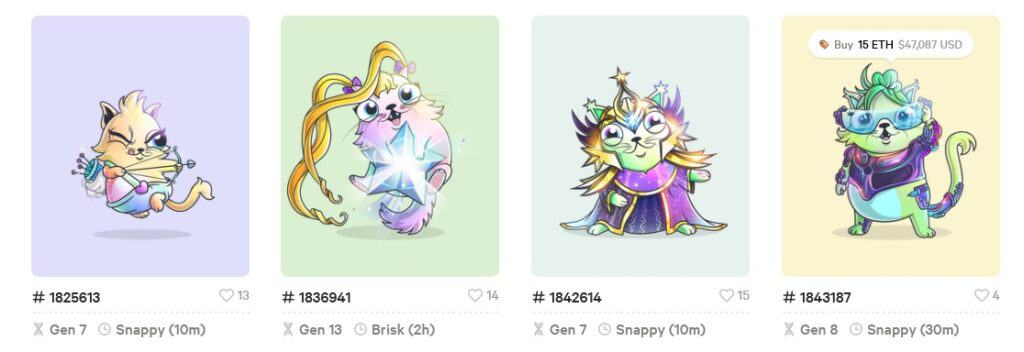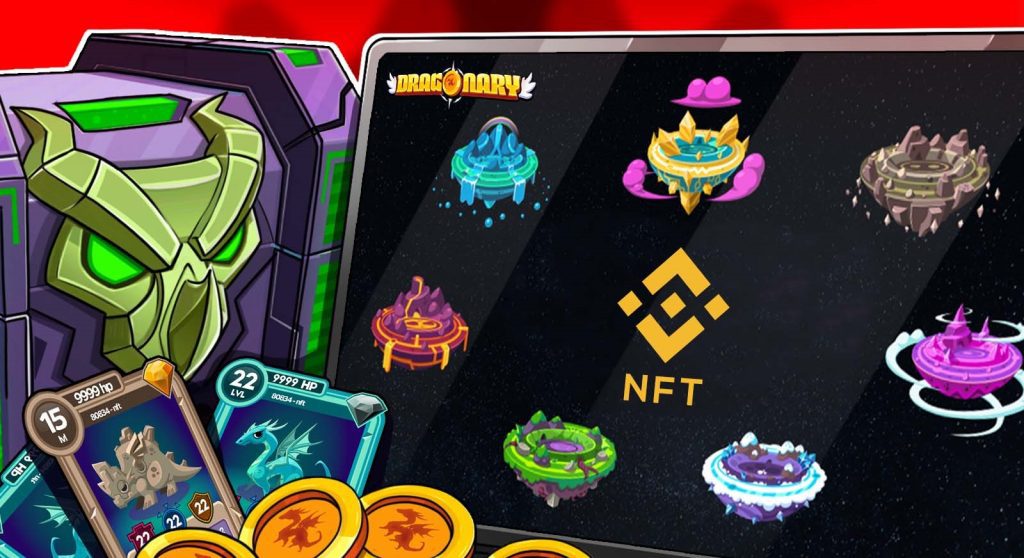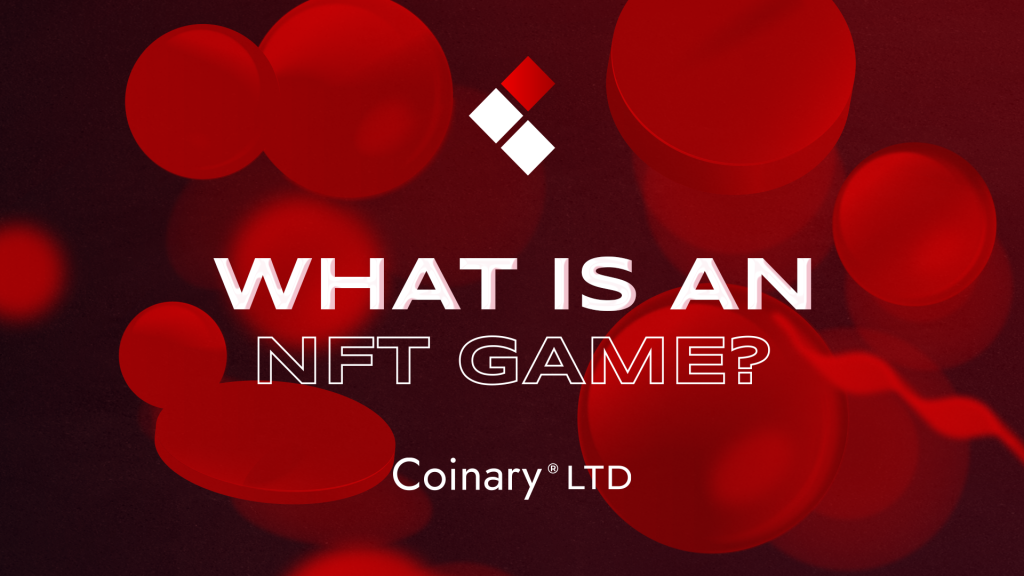The video game industry—worth over $300 billion— became one of the most interesting sectors for non-fungible tokens to disrupt. Within a non-fungible token (NFT) game, players can benefit from the immutable and trustworthy nature of the blockchain.
Blockchain technology is around us for more than a decade! And recently, it has been embraced by a new type of game model.
According to a study conducted by the Cointelegraph research team, more than half of cryptocurrency users play NFT games, but less than half of that number use DeFi protocols. This is the first time that blockchain games have been more popular than other decentralized applications in the history of crypto.
Everything started with the creation of the ERC-721 standard token for NFTs. This suddenly opened up a plethora of exciting opportunities for gamers and game developers. Opening a new future to the whole gaming industry by combining what blockchain has to offer, taking for the first time true ownership for players.
GameFi became this new space that integrates finance within the gaming industry and brings players around the world new opportunities. But before we venture further into the main topic, let’s take a look at some background.
The first time an NFT appeared in gaming
The basic concept of GameFi dates back to the early days of the blockchain itself. Bitcoin allowed us to incorporate some of the first examples of what we consider to be the ground basis of GameFi. It was only a matter of time before the lucrative gaming industry and the cutting-edge infrastructure of blockchain technology bonded together. A few years before the hype; some early peer-to-peer services that enabled players to monetize mainstream titles were trying to figure it out. Even Minecraft integrated bitcoin into its servers.
Some of the most innovative DeFi functions and NFT implementations used in the games are created on the decentralized frameworks. The financial opportunities that players can get from NFT games are entirely different from what they can find in the traditional gaming industry.
The very first blockchain-based game was Spells of Genesis. But, the relationship between NFTs and the video game industry didn’t merge completely until late 2017. The roots of NFT games are related to this cat-themed collectibles games called Cryptokitties.


It was the first NFT game released on the Ethereum network, and it almost breaks it. This new gaming model became very popular in so short time, that with its release to the public, the whole Ethereum network stopped working due to all the simultaneous transactions.
Nowadays, GameFi can be found in many shapes and sizes. There are also countless ways for players to generate yield through their gameplay, which can change from game to game. But still, the concept remains immutable.
Why are NFTs used for in video games?
Stored in the form of smart contracts is the information that makes an NFT unique. This feature is essential and is what makes them good to use in games, usually as characters, items, and other assets useful for the game and eventually, traded.
While some people play the game just to collect game items and show off their achievements, non-fungible tokens create legitimate ownership within games. This is undoubtedly one of the most exciting and talked applications about NFTs.
And soon, playing in the metaverse would take that to a whole new level. A completely innovative experience is offered by the blockchain game (and it is just the beginning).
The multidimensionality that GameFi provides is the reason NFT games are so fascinating. It’s a fact, as the metaverse continues to grow, gaming will get even more advanced.
How do NFT games works?
Understanding what makes something non-fungible is important; this is what makes it unique.
We could try to explain it with an endless number of examples. For instance, picture a street with a bunch of houses. They might seem identical on the outside; on the Inside, each house is different. Each one is unique! Something that does happen with or money in general. Yes, real money does not have an intrinsic value outside the paper it’s printed on.
As it happens with NFTs, each bill or token is “unique” only because of the social value it has, but the main difference is that another bill or token can replace the one before without making any difference. This is not feasible nor possible within the frameworks of non-fungible tokens. On the contrary, each NFT represents a unique item and cannot be traded for the same collectible item because of this uniqueness.
You should also know, the protocol for trading and creating NFTs is called ERC-721, stands for Ethereum Request for Comment- 721. This is a smart contract protocol that lets a token be exchanged and issued, as it store the information needed to describe and track of the NFT in the game.
Since ERC-721, other token standards have been created, such as ERC-1155. This protocol allows us to describe tokens as fungible or non-fungible. Something that indeed powers the universe of games inside Coinary. Thus, enabling us a greater flexibility and interoperability for NFTs inside our ecosystem.
NFT games are mostly present on Ethereum, L2, or the BNB Chain smart contract platform. Some offer a battle experience with collectible characters, such as Dragonary, while others develop into mechanics as a trading cards or a racing game (Fantasy Racing it’s on its way).
The purpose of in-game NFTs
In-game NFTs offer another way to generate income by playing. Players can earn an NFT that represents a collectible item instead of earning a governance token in the game.
This game mechanism is the traditional way of generating income with NFT games. Items will be worth different amounts based on how rare they are or how useful they are in the game. An example of a game that relies solely on NFTs is CryptoKitties. In this game, there is no way to continue playing and get a stable income without the element of luck
For example, Dragonary, offers a combination of both play-to-earn and in-game NFTs.
These digital assets that players can earn or buy in-game can be sold for profit, just like any other NFT. These items will also carry over to other blockchain games as they are developed, so the unique or rare skins you earn can be with you for a while.
And just like with any other NFT, some of these in-game assets can sometimes fetch a staggering amount on the secondary market
What’s the difference between an NFT game and a regular one?
Game assets are owned and controlled by the game developer, this is one of the main features of traditional games. This means that if the player acquires plenty of assets in the game while spending time on it, it does not belong to them.
In contrast, blockchain-enabled games focus more on creating value and allow players to better understand the value of the assets they get in regular games
The motivation behind playing NFT games is different from traditional games, as players can earn real market value for their token while playing. These games use NFTs to create scarcity and value in their digital markets while still being fun and engaging.
Within NFT games, is a win-win for players in multiple ways. While traditional models of earning involve finding, earning, or breeding rare collectibles, players can experiment with different models of gameplay.
The meaning for NFTs in the gaming industry?
Players usually requires a combination of skill and strategy in most games that are part of this exciting and emerging sector. Although luck will be an essential component, it won’t be the main factor in choosing who wins or who’s eligible for a financial reward
If we look at NFT games in a simpler way, they are games that use NFTs in some way. Easy, right? A NFT game is more than just collecting and holding the NFTs in your crypto wallet. NFT games involve player interactions, sales, and transfers of game avatars or characters, and other game assets.
Since these games are based on a blockchain, NFT games enable decentralized gaming platforms that allow to own assets you can trade without any barriers. The real essence of NFTs is that all transactions are recorded on a blockchain. This drives a transparent gaming economy for everyone.
Players in NFT games can have full control over their assets. Digital ownership creates a new source of income, as it provides more incentive to play a game. This is an attractive option because it allows players to earn crypto if they sell the NFTs.
A Simple Explanation of the Economics of an NFT game
NFT games introduced a monetary system that grew quickly and easily to scale. Unlike the traditional video game industry, resources go from the game to the players and between them.
This is precisely what allows players to unlock the full potential of these assets acquired in-game. To rise the quality of the game while users having fun is one of the many examples what can NFTs be used for. Opening the doors to benefit from their tradable and real-world economic value. A suite of financial tools —and advanced in-game economies— built on a set of both fungible and non-fungible tokens is coming together.
The Play-to-earn model is a big part of a blockchain game’s economy. It creates a way to distribute resources to players. By completing a daily task, or maybe holding some NFT in their wallet, can make them eligible for an in-game reward.
At Dragonary we are proud of what we give to the community with more than 1,000,000 CYT tokens delivered since day one. We have reached a new milestone in the history of NFT games!
The future of NFT Gaming
The usefulness and function of NFTs will become more and more common as this new technology develops. The use of non-fungible tokens in the gaming world will help people get true ownership of their digital assets.
The value of a game is increasing by the NFT options. This is mainly because they offer more exciting options than traditional gaming.
Furthermore, the transition of large companies adopting these technologies shows that the gaming industry is also serious about implementing blockchain innovations in mainstream games. Ubisoft and the creation of Quartz show that the future will be bright.
Coinary NFT Collections


At Coinary, we love NFTs! Dragons of all elements, the most beautiful Waifus, and even Karts from Fantasy Racing will be part of our collection. Not forgetting, our adorable and friendly creatures ready to blast your screen in Clash of Pets: Sweety Match.
The game Dragonary is the best example of a game that relies on the collectivity of in-game NFTs with a mix of play to earn. Tamers can raise, train and level up their dragons by fighting in the arena in PVP mode, or by venturing into dungeons where they can receive prizes of all kinds. You can go to the Marketplace and see the NFTs users are selling at the moment.


In Fantasy Racing, Drivers are part of the 14,000 collectible karts. The only way to get one is by fusing two rare NFT dragons. Yes, the same dragons that come from Dragonary. This demonstrates the interoperability that comes to change the paradigm of centralization in the traditional game industry.
One last thing about NFT games.
Before jumping into a project and invest all the money in your web3 wallet, carefully review the rules of the game you are playing. Also check the permissions you grant before connecting the web3 wallet. Make sure you familiarize yourself with the game to avoid unwanted surprises.
GameFi is one of the most exciting and cutting-edge ecosystems in the space right now, and we think that its future is very bright. New NFT game titles are finding large user bases because development has reached the point where the technology behind them and general understanding is starting to gain traction.
Before we wrap things up, one last piece of advice. For us, it is a pleasure to be able to provide you with the tools to adopt these new technologies. Always in a fun and frictionless way.









